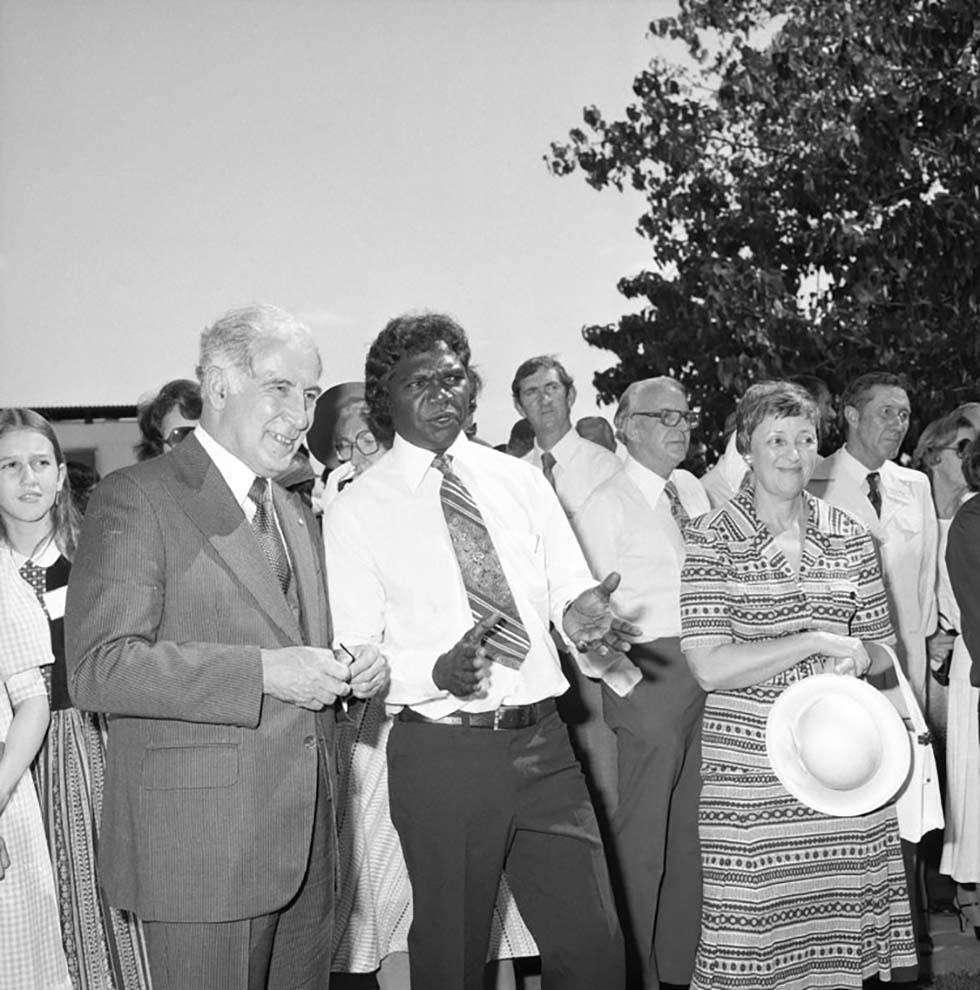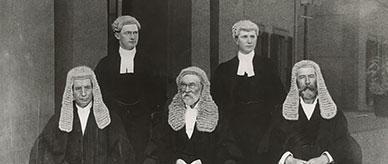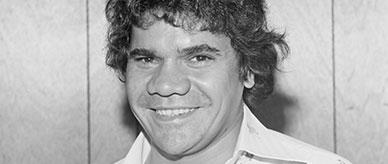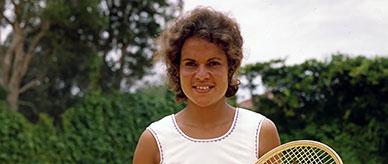


About this record
This is a black-and-white photograph of a scene at a garden party held at Government House in Darwin, capital of the Northern Territory, on 8 September 1978, when celebrations took place to mark the start of self-government for the Territory. In front, on the left, is Sir Zelman Cowen, then Governor-General of Australia; on the right is his wife, Lady Anna Cowen. Standing between them is the Indigenous leader Galarrwuy Yunupingu.
Educational value
- Relates to self-government for the Northern Territory – special federal legislation gave the Territory self-government from 1 July 1978, with a fully elected Legislative Assembly that had the same powers as states' legislatures, except in the areas of Aboriginal land, uranium mining, national parks and industrial relations; in a referendum held in 1998, Territory voters rejected a proposal for full statehood.
- Depicts a scene at the celebrations held in Darwin on 8 September 1978 to mark self-government for the Territory – the celebrations included speeches in the Legislative Assembly by a number of dignitaries, including the Prime Minister, Malcolm Fraser; they also included a garden party at Government House with performances by Aboriginal dancers from Bamyili (Barunga), near Katherine.
- Features the Northern Territory Aboriginal leader Galarrwuy Yunupingu (1948–) Yunupingu, who was born at Melville Bay near Yirrkala, rose to prominence in the late 1960s and 70s in the struggle for land rights for Indigenous peoples; he served as chairman of the Northern Land Council between 1977 and 1980 and between 1983 and 2004, and was chosen as Australian of the Year in 1978 for services to the Indigenous peoples; in 1998, the National Trust nominated him as one of 100 'Australian Living National Treasures'.
- Shows an Indigenous leader who was to become disappointed with the results of self-government – in a newspaper article in April 2005, Yunupingu stated that self-government had marked the start of a continuing period of neglect of the Territory's Indigenous peoples, who comprise about 29 per cent of its population; he called it 'a national disgrace' that since 1978, the Territory and federal governments had failed to provide adequate housing, health and education services to Indigenous communities.
- Features Sir Zelman Cowen (1919–) Sir Zelman was a distinguished academic and lawyer; he served as Governor-General from 8 December 1977 to 29 July 1982, after which he returned to a senior academic position; Sir Zelman had first been in Darwin as an Australian Navy lieutenant during World War II; he was there on 19 February 1942 for the first and most deadly attack by Japanese warplanes.
Acknowledgments
Learning resource text © Education Services Australia Limited and the National Archives of Australia 2010.
Related themes
Need help with your research?
Learn how to interpret primary sources, use our collection and more.



